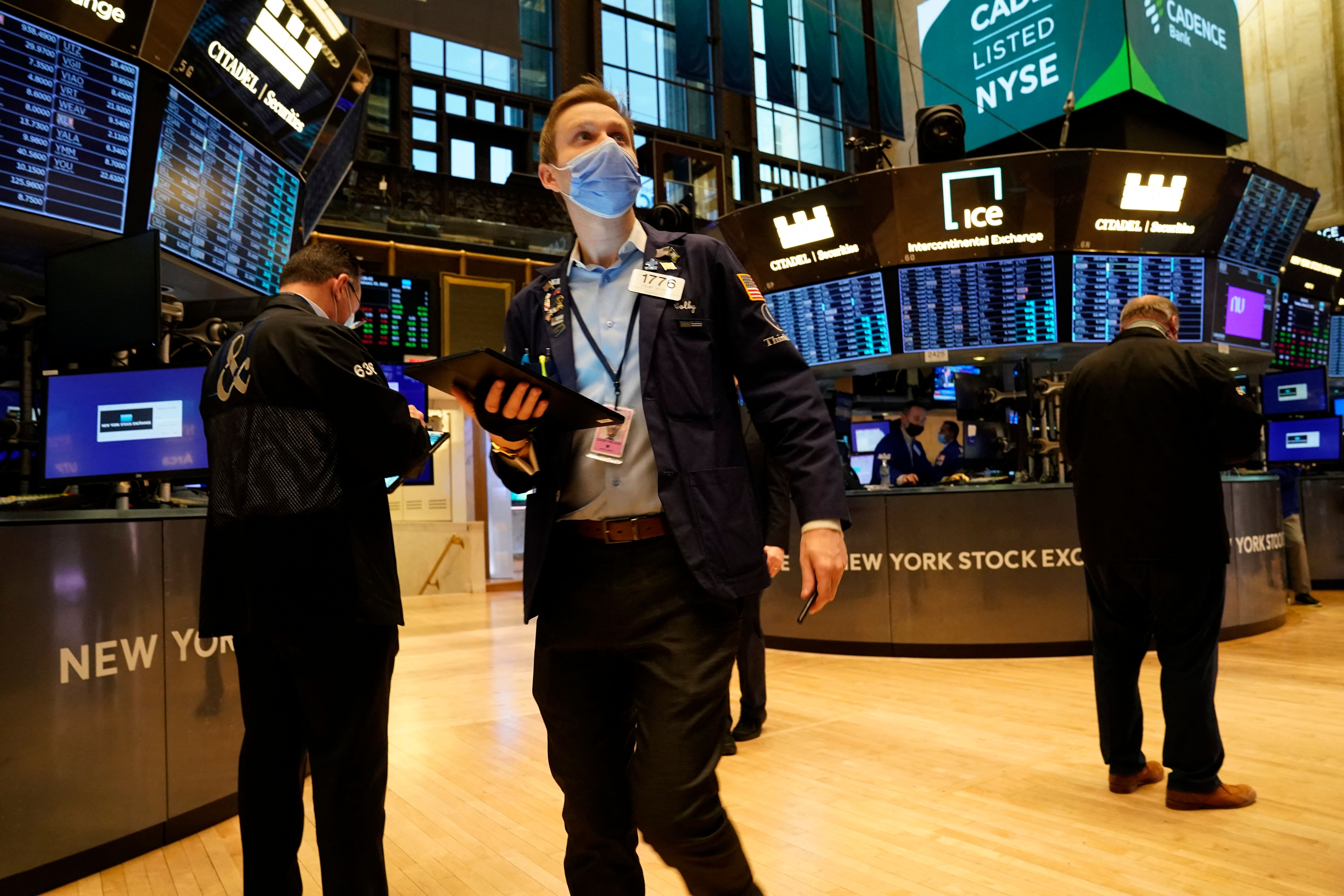Markets: A stomach-churning ride for stocks
Why Wall Street is feeling bearish

The smartest insight and analysis, from all perspectives, rounded up from around the web:
A wild week on Wall Street saw the stock market register its first correction since March 2020 and then stage its biggest intraday comeback in 13 years, said David Lynch and Taylor Telford in The Washington Post. The year kicked off with three consecutive weekly declines in the stock market that saw the tech-heavy Nasdaq fall almost 12 percent since Jan. 1 and the broader market slip into correction territory — a loss of more than 10 percent — early this week. In recent years, investors have poured money into U.S. stocks, convinced that with bond returns close to zero, there is no alternative to the U.S. equities market. But now "the sour cocktail of imminent Fed rate hikes, persistent inflation, Omicron, and Russian threats against Ukraine" is giving investors second thoughts about the stock market. "Winter is here," wrote Michael Wilson, Morgan Stanley's bearish and influential chief equity strategist.
The massive tech sell-off carries echoes of the dot-com bust, said Lu Wang in Bloomberg. The Nasdaq 100 dropped "more than 1 percent in every session" last week and is on track for its worst month since the financial crisis. "A full week of big down days hasn't happened since the dot-com bubble burst, first in April 2000 and then in September 2001." The market has been just as tough on the small-cap index Russell 2000, said Karen Langley in The Wall Street Journal, down 16 percent since its record close in November. That's "in large part because of the high proportion" of speculative companies that "thrived in the ultralow-rate environment" and don't make money. The prospect of higher rates has curbed many investors' appetite for such risk. There's another way to see the sell-off, said the Financial Times in an editorial. "Poor results for companies that profited from lockdowns are a bullish signal for society more generally." The term "correction" is also apt, as the "valuations of some of these companies got out of hand relative to their underlying earnings." A fall should "add some needed discipline to the market." But investors shouldn't "overdo the correction either." Some of the trends that have benefited tech companies throughout the pandemic, such as changes in "how we shop, work, or relax," may take longer to take hold than the tech optimists anticipated.
The Week
Escape your echo chamber. Get the facts behind the news, plus analysis from multiple perspectives.

Sign up for The Week's Free Newsletters
From our morning news briefing to a weekly Good News Newsletter, get the best of The Week delivered directly to your inbox.
From our morning news briefing to a weekly Good News Newsletter, get the best of The Week delivered directly to your inbox.
Many analysts have tried to explain the market mayhem as coming from the anticipation of rising interest rates and tighter Fed policies, said Nir Kaissar in Bloomberg. But "the endlessly repeated idea that rates and stock prices move in opposite directions" isn't actually supported by data. In the three instances since 2000 when the Fed lowered rates, yes, stocks bounced up. But in the 13 rate-raising campaigns since 1954, "the S&P moved higher during 11 of them, with a median gain of 14 percent." High inflation is making investors fear that we will repeat the stagflation of the 1970s, when inflation soared in a weak economy. But "the 1970s were an outlier." Most often, high inflation and Fed rate increases come in periods when the economy is strong. If the underlying economy stays strong, the markets may turn around and "shrug off" any changes from the Fed.
This article was first published in the latest issue of The Week magazine. If you want to read more like it, you can try six risk-free issues of the magazine here.
A free daily email with the biggest news stories of the day – and the best features from TheWeek.com
-
 Wilde Cambridge: home-away-from-home in a prime city spot
Wilde Cambridge: home-away-from-home in a prime city spotThe Week Recommends This laid-back aparthotel is the perfect base for a weekend of exploring
-
 The best alcohol-free alternatives for Dry January
The best alcohol-free alternatives for Dry JanuaryThe Week Recommends Whether emerging from a boozy Christmas, or seeking a change in 2026, here are some of the best non-alcoholic beers, wines and spirits to enjoy
-
 A lemon-shaped exoplanet is squeezing what we know about planet formation
A lemon-shaped exoplanet is squeezing what we know about planet formationUnder the radar It may be made from a former star